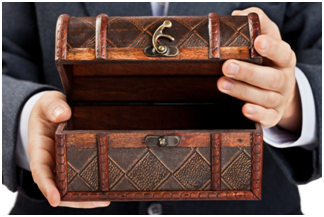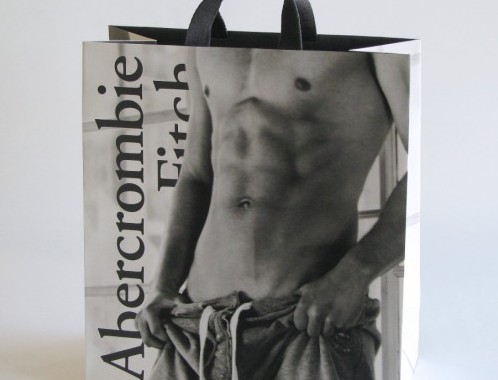This is a guest post courtesy of Craig.
The landscape of business is constantly changing, constantly evolving, and new ways of doing business continue to emerge at an almost staggering pace.
However, there is one constant that you can most definitely count on to stand the test of time.
It quite possibly is the most valuable asset a business can cultivate, and often times can mean the difference between sink or swim.
And with that scintillating little teaser, I’ll let Craig take over.
What’s the Most Valuable Thing You Own?
In regards to business that is.
If you’re a retailer for instance, might it be your products? Your stores?
Perhaps it’s your history or unique story? Or the way you work and do business?
Nope – actually it’s your brand.
Which of course could be just another way to say yes to all of the above.
Put simply, your brand is the way your company is perceived – and remembered – by your customers.
It’s what makes you stand out from your immediate competitors in your market or sector.
And it’s what helps you build your reputation as a retailer or business that your customers can trust, and buy from again and again.
And yes, it often encompasses all of the things listed above… your products, stores, history, your brand story, and the way you do business.
One common misconception is a brand is just:
- Your logo
- Your company slogan or strapline
- Your colors, designs, shapes, and symbols
- Your images / photography style
However, these things are simply visual devices which are used to communicate your brand.
Nutshell– what you stand for dictates your tagline and how your logo looks, not the other way around.
It affects everything that your customers interact and connect with on a daily basis.
Your brand tells the world:
- What you do and how you do it
- Communicates your company’s values
- Helps your customers identify you
- Ensures customers remember who you are
- Distinguishes you from your competitors
Fun factoid:
The term ‘branding’ was first used when farmers wanted a way to distinguish their cattle from those at rival farms.
Businesses picked up on that, and these days, the term still has a similar meaning even if the methods and execution differ drastically.
What Can You Learn from Retail Giants?
You’ve probably seen the fantastic paper shopping bags you get whenever you buy something from Abercrombie and Fitch.
These bags are a great example of how you can extend your brand into your packaging, and use it to your advantage.
They’re instantly recognizable, and Abercrombie’s customers often reuse their bags again and again, which multiplies their effectiveness as a branding tool many times over.
If, in the past, you’ve used simple plastic bags, then a switch to branded carrier bags or printed plastic bags of a much higher quality like Abercrombie’s will re-position your brand as high-end or more luxurious.
Higher quality custom printed bags (especially bags that include snips of your brand messaging, not just a logo) can speak volumes about who you are, what you do, and the products you sell.
This in turn strengthens your brand. The stronger your brand, the more people recognize you and what you stand for.
Equally, if your brand position is eco-friendly you can choose your packaging accordingly so that it is aligned with those values too.
The Body Shop, who produces cosmetic products, use brown Kraft Paper bags because they signify ‘natural’, ‘fair trade’ and ‘additive free’ to a customer.
This is exactly what a market leader whose positioning pushes natural cosmetics wants to communicate.
Once again, branding is all about perception.
Market leaders got to be leaders because, in their customer’s minds, they benefit in a very specific and memorable way when they buy a product from their store.
With Abercrombie, customers think:
“I want to be cool and popular, just like the beautiful, wealthy surfers who wear Abercrombie”
Ergo… that’s where they buy their clothing. This ‘idea’ is Abercrombie’s most valuable asset.
Take time to think through one ‘life changing’ benefit you would like your customers to associate with you, the value or idea is your company based upon.
It might need streamlining and more clearly defining, but once you have this base idea figured out then you can begin to make strategic, day to day decisions to further the image and message you want to convey.
Get Busy Communicating Your Brand
If you’ve put time and effort into cultivating a brand, it’s essential to make sure that it works as hard as possible for you.
Often, getting the results you’re after involves refining and tweaking and testing different ideas, keeping what works and discarding the rest.
Maybe that means refining your copy to communicate your message more clearly. Maybe that means trying different taglines on for size. Maybe that means tweaking your visuals, or re-designing your logo, or upgrading your packaging.
While none of those things are your brand in and of itself, things like messaging, logos, and packaging are ways you communicate your brand.
Things like packaging can be considered a ‘touch point’ where your customers interact with your brand. Over the years I have seen so many businesses failing to use their bags as the advertising opportunity they are.
Something basic like your packaging is so visible to your customer; everyone who buys from you comes into contact with it… serving to get your message out into the world in a deceptively simple yet extremely effective way.
Over to You
Are you helping your brand realize it’s fullest potential? Do you use things like your packaging to help further your message and advertise your products? Have you considered what your current packaging, bags, logos, designs, and messaging are communicating to your customers at all? Do share in the comments below.


